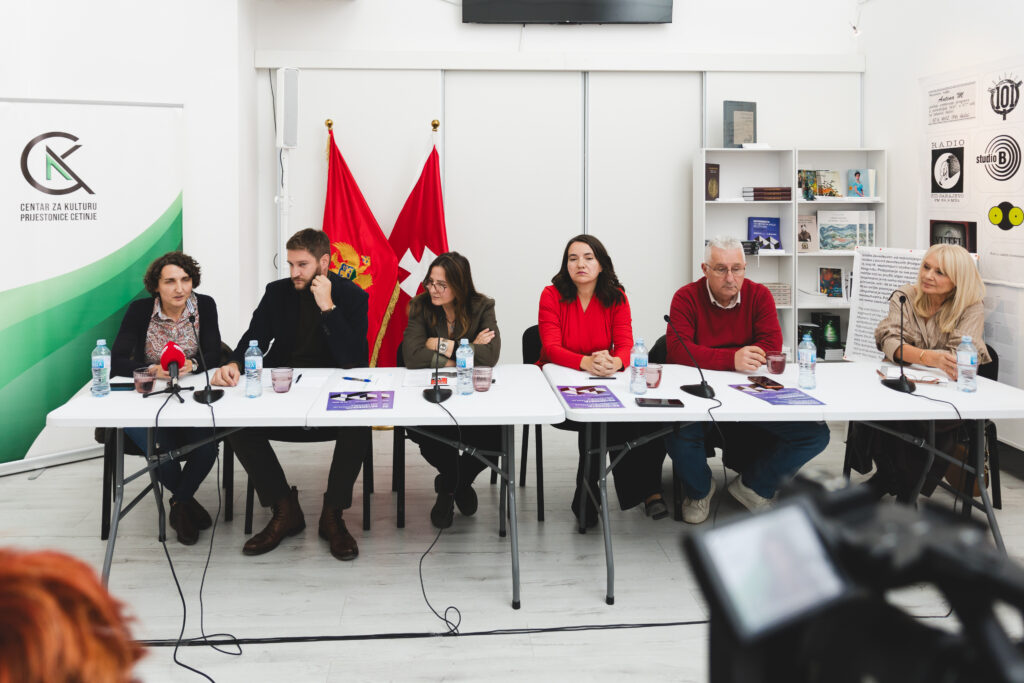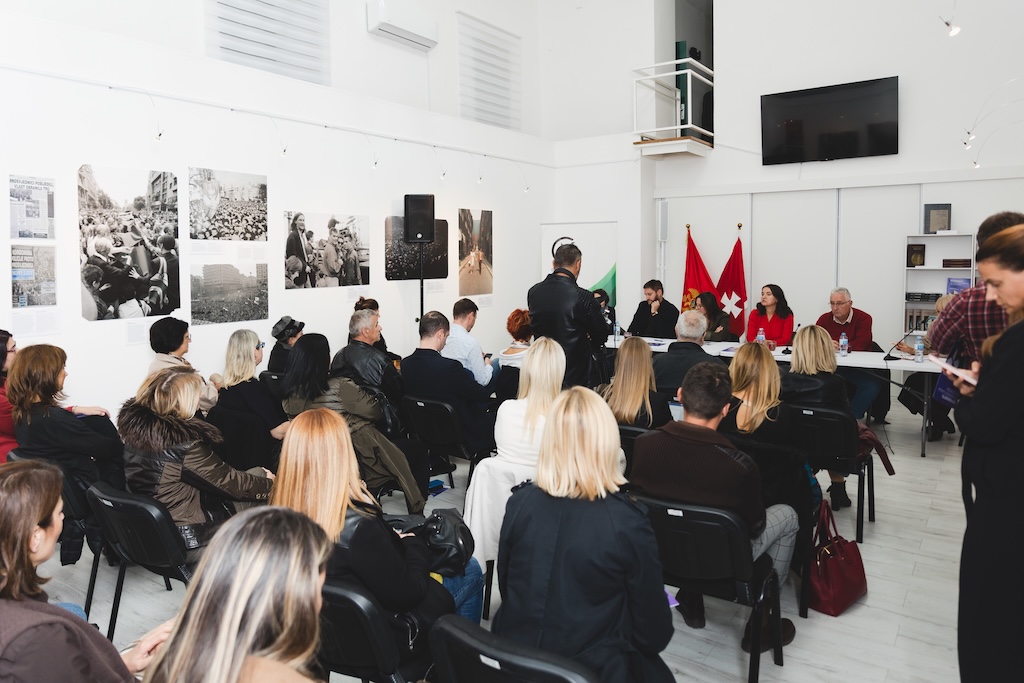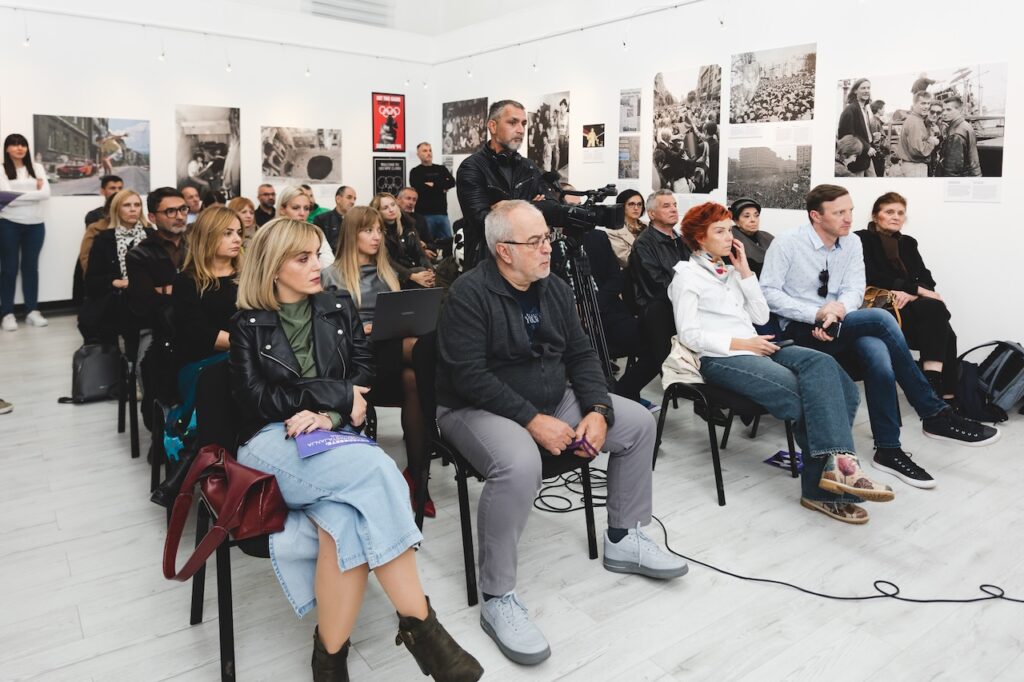The 1990s are not just a part of history – they are still present in the way we remember, decide, and live. This was the central theme of the panel “The 1990s: From Non-Compliance to Resistance”, organized today by the Centre for Civic Education (CCE), Cultural Front, and M90 Foundation at the Cultural Centre of the Old Royal Capital Cetinje.

“The 1990s did not begin in the 1990s. For forty years, the ideology of brotherhood and unity existed in this region – let us not forget that every seventh marriage was mixed – and that ideology had to be broken for the national projects to emerge,” said Filip Kuzman, historian and Head of the Historical Museum of Montenegro. He recalled that incidents predicting the collapse of that ideology were recorded as early as the mid-1970s. “After that came new leadership and a period when new, nationalist parties began to form, in all republics except Serbia and Montenegro, they took on a clearly defined national character,” Kuzman explained. He believes that this shows it was a long-lasting and carefully prepared process. “We should not forget that the international community did not want the breakup of Yugoslavia. This is confirmed by the fact that even during the events in Vukovar and Dubrovnik, it was still working on achieving an agreement, one that Montenegro had accepted, although the result was the dissolution of Yugoslavia,” Kuzman concluded.
“We still feel the 1990s. As a historian, I like to repeat that history is not a natural science – nothing in it is inevitable. Although processes have their own logic, there are always multiple paths, and the 1990s were not inevitable, but the politics that interpreted them were and they still shape the region, especially in Serbia”, said Dr Sanja Radović, historian and researcher with the Museum of the 1990s Initiative. She added that the broader social interest was completely sidelined at the time, while all voices not aligned with nationalist narratives became targets. “Harm was done not only to individuals or certain ethnic groups, but also to later processes in the region. The use of media during that time was recognized as a powerful tool for maintaining divisions”,Radović said. She also emphasized that entire generations grew up in societies without opportunities for regional cooperation or for meeting their peers from neighboring countries. “Fortunately, this has begun to change in recent times, thanks to programmes like the one we are taking part in today. The Museum of the 1990s Initiative is a regional endeavor intended to provide new insights and to open space for trans-generational dialogue about that period”, she stated.

“The 1990s caught me in high school. We lived in a developed industrial town and dreamed of a bright future – university, going abroad, and freedom from parental supervision… Unfortunately, my generation was interrupted by the 1990s”, said Jelena Lela Milošević, Director of the Cultural Centre of the Old Royal Capital Cetinje. “When we were asked at graduation to declare our nationality, we identified as Yugoslavs – we grew up with the idea of brotherhood and unity – and it was shocking when divisions, distinctions among nations, and hate propaganda appeared. Luckily, I grew up in Cetinje, where there was resistance to those ideologies and we opposed the war”, Milošević added. “Although the ideologies of that time are still present, today’s atmosphere is not the same; it does not awaken rebellion, and young people are often apathetic. By talking about the 1990s we should encourage reflection but also find other ways to spark the necessary awareness, defiance and resistance”, Milošević concluded.
“I am a child of Cetinje of the 1990s. Our heroes were the people shown on the map of this exhibition, such as Admiral Barović, Tomo Buzov and others. If we were to make a map of lighthouse cities today, Cetinje would, without doubt, be the city with the strongest light”, said Dr Jasna Tatar Anđelić, professor at the Faculty of Philology, University of Montenegro. She noted that the anti-war movement shaped that time, highlighting the importance of media such as Monitor, Liberal and Radio Cetinje, as well as intellectuals who opposed war propaganda. “There were cultural initiatives that strongly tried to resist the atmosphere of hatred. For us, even political rallies were cultural events – so when we talk about the pillars of a culture of resistance, we are not speaking only of media, but of every individual who understood it was absurdity of going to war”, Tatar Anđelić explained. She pointed out that the absence of such information in the education system has led to a kind of “second round of the 1990s” as new generations grow up without a clear understanding of that period.
“In terms of values, ethically and aesthetically, the anti-war stance belonged to a fairly small minority, but unlike most Yugoslav republics, that minority in Montenegro was not so small”, said Zoran Radulović, journalist at the weekly Monitor. Speaking about the role of the media in that period, Radulović recalled that journalists then had the ability to see and assess what was true, to place a story in context, and to respond with greater responsibility than is often the case today. “The media space was constrained, but even so, there were outlets that resisted pressure”, he said. Radulović added that fear was omnipresent, though it took different forms. “There were personal fears, but also deeper ones: fear of disgracing ourselves, of writing something that might endanger a minority. Those were our everyday ethical dilemmas,” he said, recalling that time.

“From today’s perspective, it was hard to work as a journalist in such circumstances – and yet it was valuable, because we had the opportunity to go through all forms of journalistic reporting”, said Mladen Zadrima, Editor-in-Chief of RTV Cetinje, reflecting on that period. He stressed that the outlet’s editorial policy was grounded in basic democratic principles. “We were anti-war and anti-fascist in orientation and an example that it was possible to resist. We were young, we believed we could change the world – and we acted accordingly”, Zadrima added.
The panel was part of the project “Museum of the 1990s – Regional Centre for Reconciliation, Education and Future Cooperation”, implemented by Cultural Front, Foundation M90 and CCE, with the support of the Ministry of Foreign Affairs of the Kingdom of the Netherlands through the MATRA programme, and the Shared Horizons project funded by the Republic of France and implemented by Expertise France Groupe AFD. The content of the panel is the sole responsibility of the project implementers and does not necessarily reflect the views of the donors.
